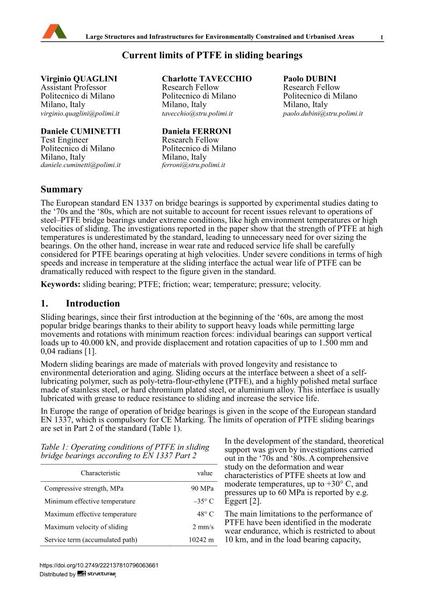Current limits of PTFE in sliding bearings

|
|
|||||||||||
Bibliographic Details
| Author(s): |
Virginio Quaglini
Charlotte Tavecchio Paolo Dubini Daniele Cuminetti Daniela Ferroni |
||||
|---|---|---|---|---|---|
| Medium: | conference paper | ||||
| Language(s): | English | ||||
| Conference: | IABSE Symposium: Large Structures and Infrastructures for Environmentally Constrained and Urbanised Areas, Venice, Italy, 22-24 September 2010 | ||||
| Published in: | IABSE Symposium Venice 2010 | ||||
|
|||||
| Page(s): | 774-775 | ||||
| Total no. of pages: | 7 | ||||
| Year: | 2010 | ||||
| DOI: | 10.2749/222137810796063661 | ||||
| Abstract: |
The European standard EN 1337 on bridge bearings is supported by experimental studies dating to the ‘70s and the ‘80s, which are not suitable to account for recent issues relevant to operations of steel–PTFE bridge bearings under extreme conditions, like high environment temperatures or high velocities of sliding. The investigations reported in the paper show that the strength of PTFE at high temperatures is underestimated by the standard, leading to unnecessary need for over sizing the bearings. On the other hand, increase in wear rate and reduced service life shall be carefully considered for PTFE bearings operating at high velocities. Under severe conditions in terms of high speeds and increase in temperature at the sliding interface the actual wear life of PTFE can be dramatically reduced with respect to the figure given in the standard. |
||||
| Keywords: |
temperature friction sliding bearing wear PTFE Velocity pressure
|
||||
